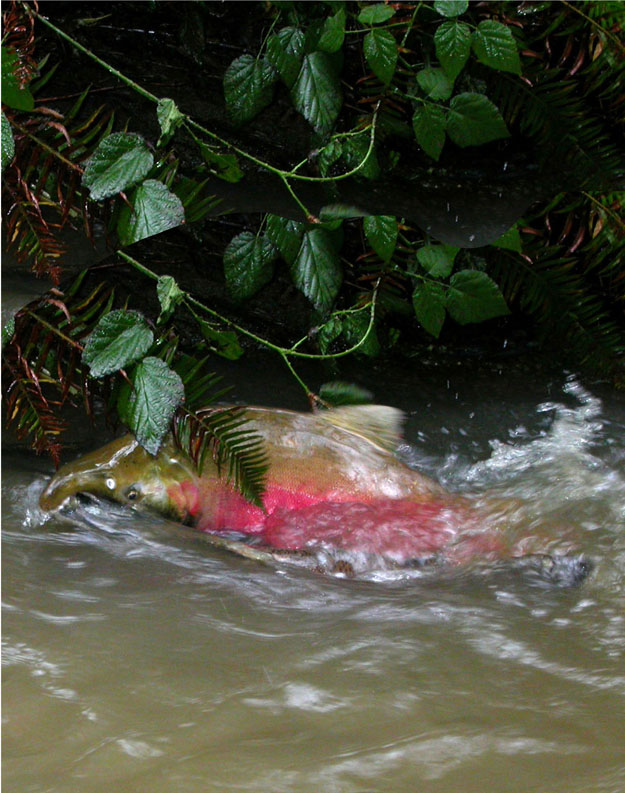Pacific salmon, millennias in the making
[dropcap]S[/dropcap]almon of the Pacific contribute angling enjoyment for thousands, put omega 3 on the plate for millions (the only remaining wild food source capable of feeding a nation), and produce a remarkable nutrient factory for fauna and flora both within and beyond its transitory riverine home.
The spawn capable Pacific varieties service to the world around them is far more important to species reproductivity and near fauna and flora than its Atlantic relatives’ near riverine inhabitants.
In his book, Running Silver, John Waldman touches on the values anadromous Pacific salmon play in the scheme of things – a value far exceeding that of any single mineral extraction operation, its wealth provision for a handful and temp jobs for a few.

Oregon adult coho salmon making a Redd to spawn in. Photo Morrison/Dunkin NOAA.
The minority that still believes losing these fish is scale measurable against a thousand years of environmental destruction is fast becoming known – “Midnight Tweeters”
Waldman wrote: “The contribution of dead salmon to the fertility of the Pacific rivers cannot be overestimated.” Anyone who has fished Alaska has seen the incredible sight of miles of cadavers in various stages of rot both in the water and on the banks. Waldman again: “This all happening while new replacements beat their way past the cadavers only several hours or days behind the dead.” Remarkably, remaindered juveniles in the stream nibble away at relatives.” Waldman adds, “. ., part of the suite of insects, fish, birds, and mammals that will scavenge on them.”
Alaskan guides will tie flies that earn newbie remarks like, “What the f*&k is that?” The flies are supposed to be salmon fish parts. Yup, the salmon will hit them and if trouts are around, whamo. Why? Probably for salmon it’s instinctive because they’re not in a feeding mode.
Trouts are just part of the corpse consumers. Pinkish or “orangy” colored round balls that mimic salmon eggs catch Alaskan trouts all summer and fall. A Tenkara angler could fish his or her way through an entire Alaskan season and never be too soon or too late – just bouncing that egg fly along the bottom and within the leash limits of that fly fishing tool.

Choose hook, add thread mid hook, add cement, add dubbing or egg yarn or Mcfly Foam or … tie off and scissor trim to round.
Ninety percent of a Pacific salmon’s weight gain is at sea
In his book, King of Fish, David Montgomery writes: “Up to a third of the nitrogen in the valley-bottom forests swam up the river as fish.”
The “nutrient” ripple effect is exhibited in trees. Timber, growing along salmon-less rivers is two-thirds smaller than trees growing along salmon run rivers. At the top of the food chain, Waldman wrote – 90% of an Alaskan Brown bear’s nitrogen comes from salmon.
The gazillions of smolts could never be healthy enough to survive their trip to the ocean or its tests if they had not had the favor of fattening up on their relatives along the way. “Salmon,” Waldman wrote, “essentially extend the fertility of the oceans inland for their purposes, but also for the benefit of a host of other species tightly entwined in these extraordinary ecosystems.”
NOTE: Featured Image. Salmon stop eating and change shape and colors as they return to the stream in which they were born. Here they begin the process of laying and fertilizing eggs. Alaska Fish & Wildlife photo.






